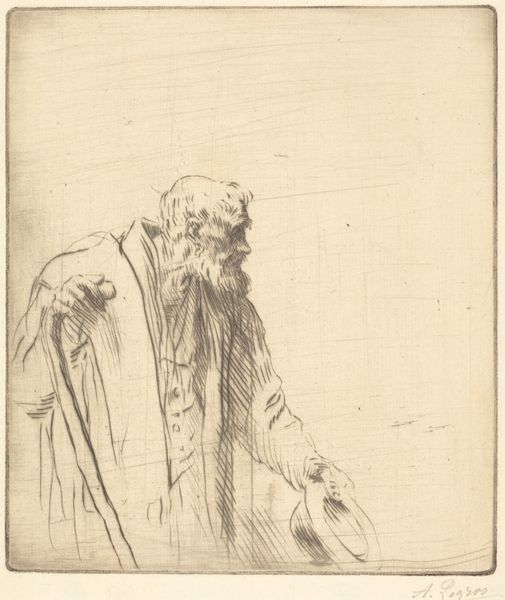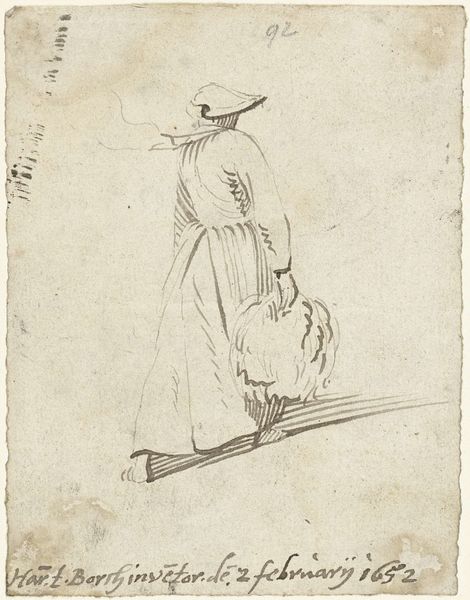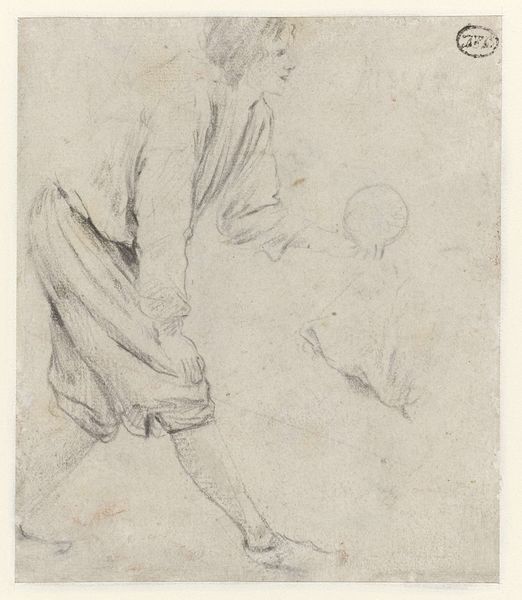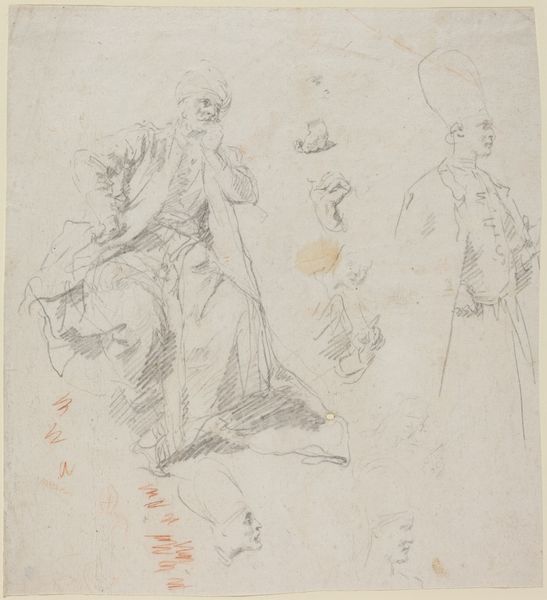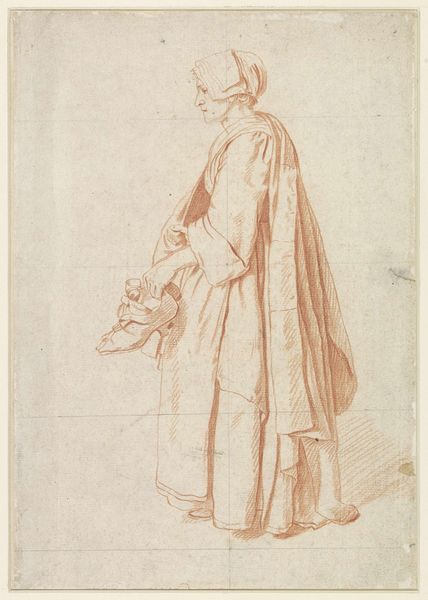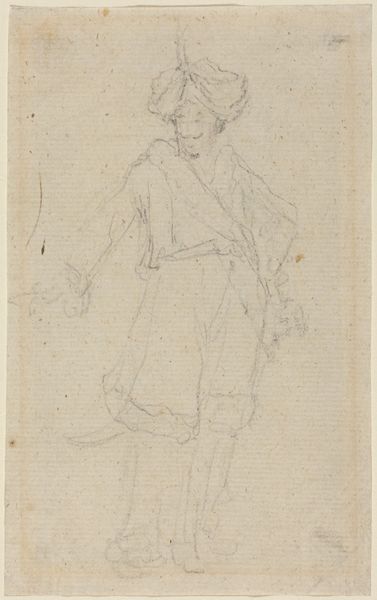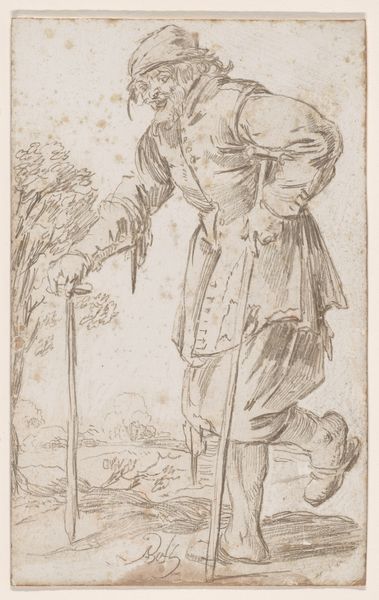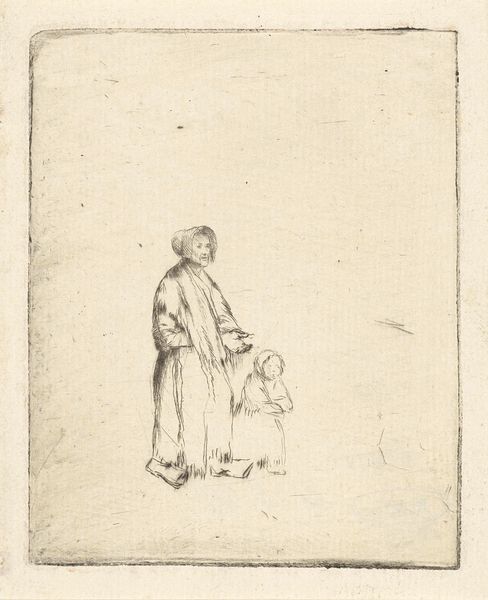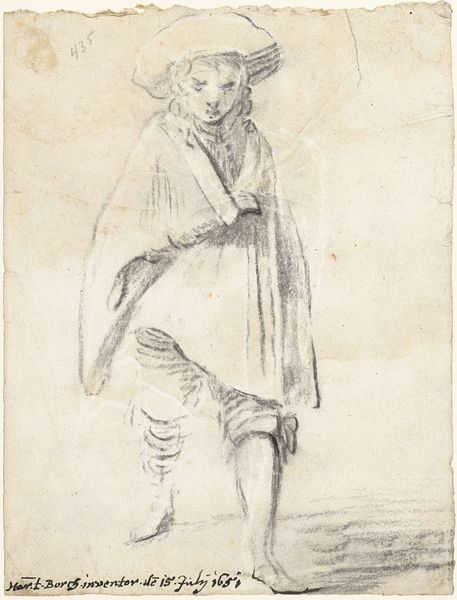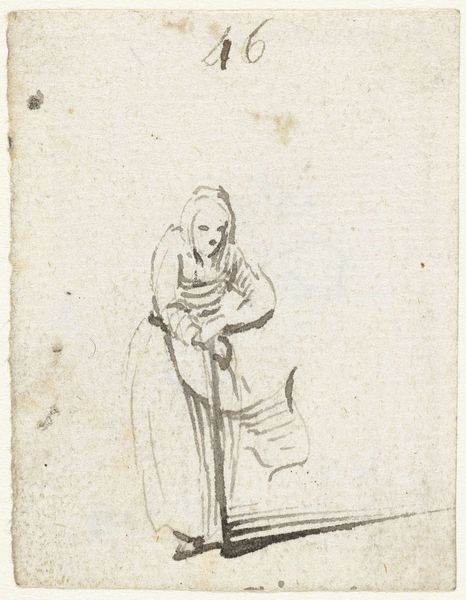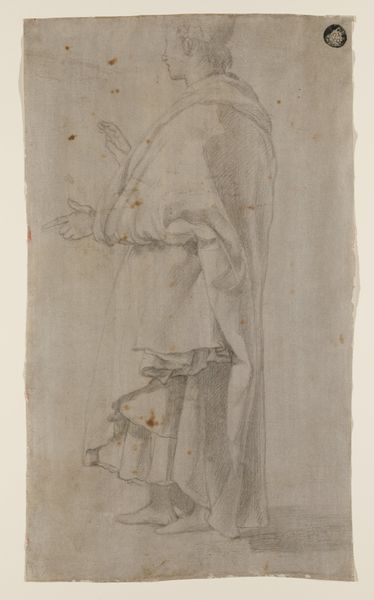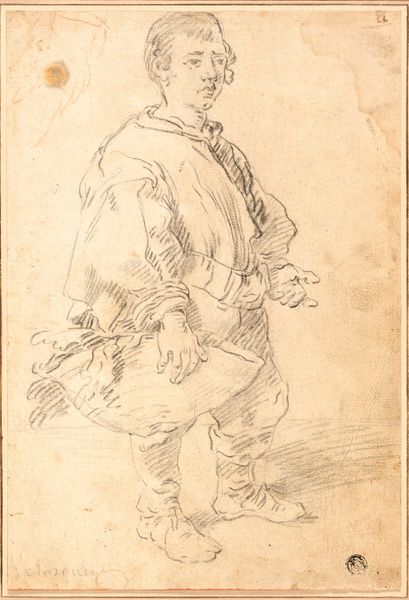
drawing, paper, pencil
#
portrait
#
drawing
#
dutch-golden-age
#
pencil sketch
#
landscape
#
figuration
#
paper
#
pencil
#
genre-painting
Dimensions: height 162 mm, width 135 mm
Copyright: Rijks Museum: Open Domain
Curator: This pencil drawing, titled "Herder staand naast een schaap", roughly translated as "Shepherd Standing Beside a Sheep," comes to us from the mid-17th century, around 1654 or 1655, and is attributed to Gesina ter Borch. You can see it here at the Rijksmuseum. What's your first take on it? Editor: There's a quiet intimacy in it. A figure, rendered simply in pencil, stands contemplatively, as the barely-there lines suggesting a sheep mirror this posture, lending a sense of understated harmony, as if reflecting the humble connection with land and beast that's such a deeply etched trope of Dutch painting and society at this time. Curator: The sketch-like quality reinforces that sense of intimacy, doesn't it? Ter Borch's seemingly casual rendering highlights the connection between humanity and nature and evokes older pastoral visual themes. The simplicity almost amplifies the enduring bond. Editor: Indeed. It speaks to a yearning for simplicity, away from the increasingly complex Dutch society of that era. It is about connecting not just to the older Netherlandish art styles, but also the visual legacy and cultural meanings surrounding rural subjects: one which emphasized work and simple life above worldly possession. I think it’s interesting what she doesn't render versus what she does. Curator: Precisely! Consider how that hat in his hand is a near caricature of a jovial peasant’s hat; what’s almost erased is the individual human expression, which suggests less a genre painting and more an Everyman shepherd. It could be an acknowledgement of our basic, even primal relationship with domesticated animals and by extension, the land they need and share with us. Editor: And in doing so, it cleverly skirts overt class commentary, right? I wonder if that was a conscious effort to appeal to a broad audience at a time of considerable social stratification. Also, I notice the way the scene is framed by a flat empty foreground: there are symbolic as well as physical layers here which ask us as contemporary observers to see the older allegorical tropes within. Curator: It does seem Ter Borch sought to explore that line: both referencing the existing imagery, and, perhaps, reinterpreting them for her contemporaries. It brings up interesting questions about the role of pastoral themes as they evolve. Editor: For me, viewing it in a modern context also means engaging with centuries of cultural meanings and anxieties that surround human labor and our connection to natural life and systems. What do you think it all boils down to, then, for you? Curator: It speaks to our deeply rooted relationship with animals and land, stripped bare in pencil strokes—a visual echo of our most basic connections.
Comments
No comments
Be the first to comment and join the conversation on the ultimate creative platform.
